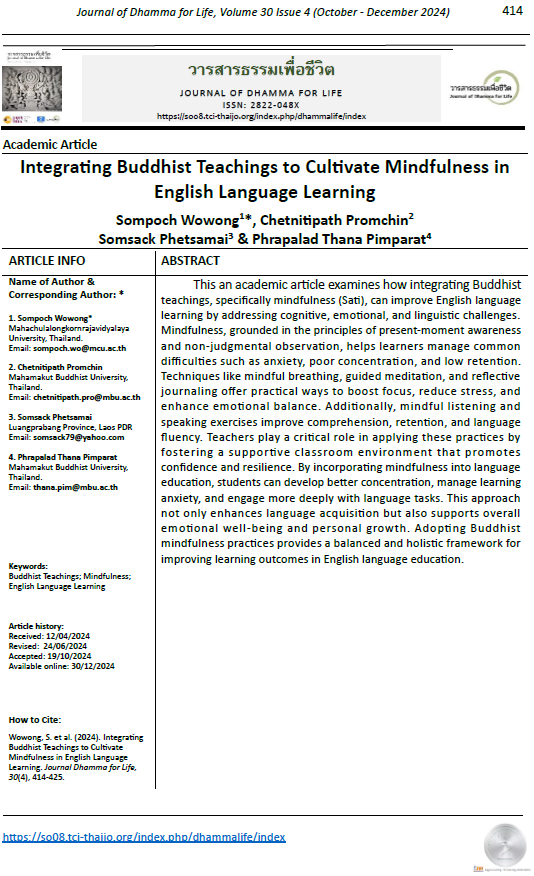Integrating Buddhist Teachings to Cultivate Mindfulness in English Language Learning
Main Article Content
Abstract
This paper examines how integrating Buddhist teachings, specifically mindfulness (Sati), can improve English language learning by addressing cognitive, emotional, and linguistic challenges. Mindfulness, grounded in the principles of present-moment awareness and non-judgmental observation, helps learners manage common difficulties such as anxiety, poor concentration, and low retention. Techniques like mindful breathing, guided meditation, and reflective journaling offer practical ways to boost focus, reduce stress, and enhance emotional balance. Additionally, mindful listening and speaking exercises improve comprehension, retention, and language fluency. Teachers play a critical role in applying these practices by fostering a supportive classroom environment that promotes confidence and resilience. By incorporating mindfulness into language education, students can develop better concentration, manage learning anxiety, and engage more deeply with language tasks. This approach not only enhances language acquisition but also supports overall emotional well-being and personal growth. Adopting Buddhist mindfulness practices provides a balanced and holistic framework for improving learning outcomes in English language education.


